Figures & data
Figure 1. Effect of TPA on BRCA1 and ERE expression. MCF-7 were co-transfected with either a plasmid expressing BRCA1-Luc (1 μg) (A) or ERE-Luc (1 μg) (B) alone or together with Tax expressing plasmid (1 μg) with or without TPA (50 nM) or E2 (20 nM) treatment. The TPA and E2 were added to the cultures 5 and 24hr respectively before harvesting the cells for analyzing the reporter expression. The presented results are an average of 3 repeated experiments ± SE.
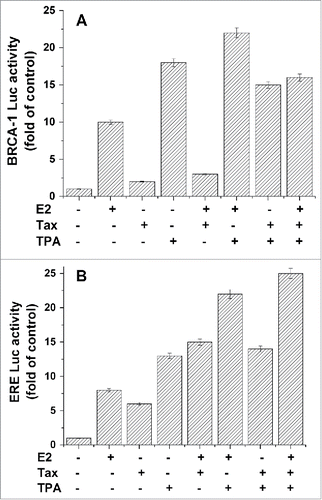
Figure 2. Involvement of PKC in TPA effect on BRCA1 and ERE expression. MCF-7 cells were transfected with plasmids expressing either BRCA1-Luc (1 μg) (A) or ERE-Luc (1 μg) (B) and treated with TPA for different periods of time alone or with 2nM BI (a potent inhibitor of PKC activity). Bi was added 2h before the treatment with TPA. The cells were harvested at 24h post transfection for analyzing the reporter expression. The presented results are an average of 3 repeated experiments ± SE.
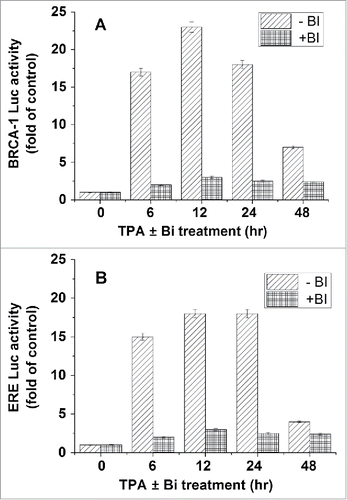
Figure 3. Effect of PKC isoforms on BRCA1 and ERE expression. (A) MCF-7 cells were treated with 50 nM TPA and at different periods of time post treatment the cells were extracted and examined for the different PKC isoforms expression by western blot analysis with the appropriate monoclonal antibodies. (B) Cells were treated with TPA for 24hs to deplete all cellular PKCs and then transfected with plasmids expressing the PKC isoforms (1 μg) and at different periods of time post treatment PKC isoforms expression was determined by western blot analysis. In (C) and (D) cells were transfected with plasmids expressing either BRCA1-Luc (1 μg) or ERE-Luc (1 μg) respectively, treated with TPA for 24hs and then transfected with plasmids expressing different PKC isoforms (1 μg). The cells were harvested at 24h post transfection for analyzing the reporter expression. The presented results are an average of 3 repeated experiments ± SE.
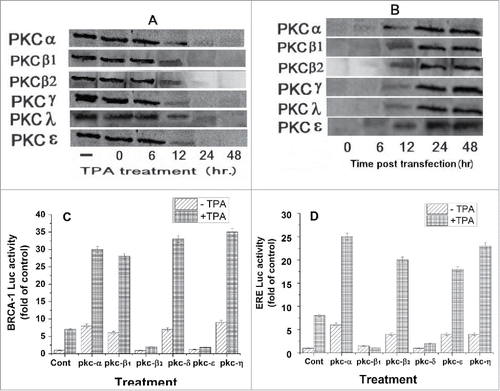
Figure 4. Effect of TPA and Tax on the expression of BRCA1 and pS2 proteins. MCF-7 cells were transfected with aTax expressing plasmid (1 μg) and treated with TPA (for different periods of time) or E2 at 5 hr before extracting the cells for western blot analysis. The whole cell extracts of the cells were examined for BRACA1 and pS2 expression by western blot analysis with anti BRCA1 and pS2 monoclonal antibodies.
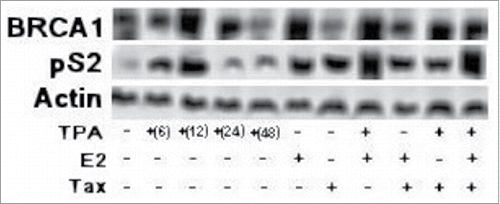
Figure 5. Examining of NFκB involvement in the TPA induced activation of BRCA1 and ERE. MCF-7 cells were transfected with BRCA1-Luc(A) or ERE-Luc (B) and treated with TPA in the presence or absence of 10 nM PS-34 (an inhibitor of NF-κ B activation). The treatment with PS-34 was at 2h post transfection up to the end of the experiment. Where indicated, cells were treated with 5ng/ml (TNF)-α, an inducer of NF-κ activation, at 6 h before harvesting the cells for analyzing the reporter expression. The presented results are an average of 3 repeated experiments ± SE.
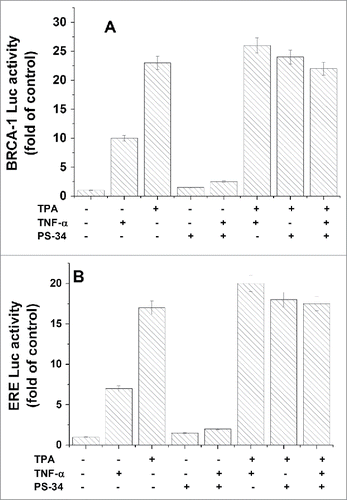
Figure 6. Examining of 53Bp1 involvement in the TPA induced activation of BRCA1 and ERE. MCF-7 cells were co-transfected with either a plasmid expressing BRCA1-Luc (1 μg) (A) or ERE-Luc (1 μg) (B) alone or together with 1 μg of the of 53BP1, shRNA 53BP1 or Tax expressing plasmids. The appropriate cell cultures were treated with TPA for 24h and E2 at 6 h before harvesting the cells for analyzing the reporter expression. The presented results are an average of 3 repeated experiments ± SE.
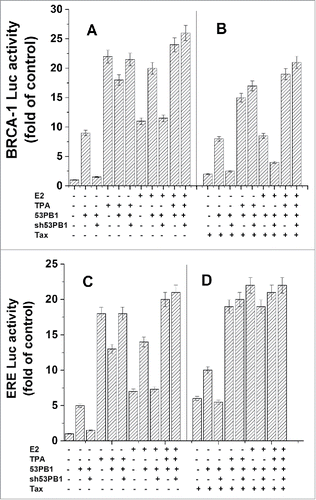
Figure 7. Effect of TPA on ERα binding to ERE and BRCA1 promoter. MCF-7 cells which were treated with TPA (for different periods of time) and E2 at 5h before their extraction for examining the binding of ERα protein to BRCA1 promoter (A) or ERE region (B) by CHIP assay as described in Materials and Methods section. The presented results are an average of 3 repeated experiments ± SE.

